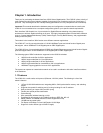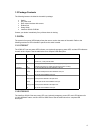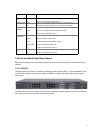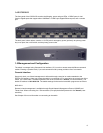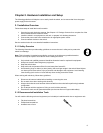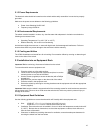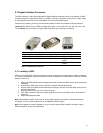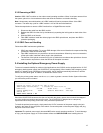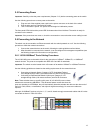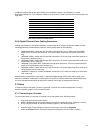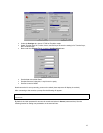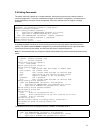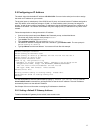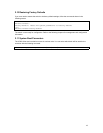
11
2.3 Gigabit Interface Converters
The GBIC Interface is the industry standard for Gigabit Ethernet Interfaces. Some of the benefits of GBIC
include reducing the components needed in a “spares” inventory, being able to choose from a wide variety
of manufacturers with cross-vendor compatibility, and having competitive prices.
Instructions for installing, removing, and maintaining GBIC modules are provided in following sections.
Important! The 35516-G has 12 GBIC ports that are paired— port numbers 1/2, 3/4, 5/6, 7/8, 10/12, and
14/16. DO NOT use more than one copper GBIC module per pair (maximum 8 modules).
Model Part Number Standard Media
GBIC 1000SX 99-00549-01 1000BaseSX Multi-mode fiber
GBIC 1000LX 99-00550-01 1000BaseLX Single mode fiber
GBIC 1000T 99-00673-01 1000BaseT Category 5 UTP (or better)
copper
GBIC 1000TP 99-00647-07 1000BaseT Category 5 UTP (or better)
copper
Table 2-1 GBIC Modules by Asanté
2.3.1 Installing a GBIC
GBICs are hot-swappable. This means that they can be inserted and removed while the switch is powered
on. However, please allow 40-60 seconds for the switch to recognize the module when it has been installed
while the switch is on.
1. Wearing an ESD (electro-static discharge) wrist strap, remove the GBIC module from its protective
packaging.
2. Verify that the GBIC is the correct type for the network (see the table above).
3. Grip the sides of the GBIC with the thumb and forefinger, and then insert the GBIC into the slot on
the face of the switch.
4. Slide the GBIC into the slot until it clicks into place.
5. Fiber GBIC modules: Remove the rubber plugs from the end of the GBIC module. Save them for
future use.
6. Attach the appropriate cable.
Note
: After installing a GBIC 1000T module, the link LED may light even before a valid cable has been
connected. This is a normal condition for most 1000BaseT GBIC modules.
Note: Auto-negotiation must be disabled on a port in which a copper GBIC module is installed. Copper
GBICs themselves control auto-negotiation.





